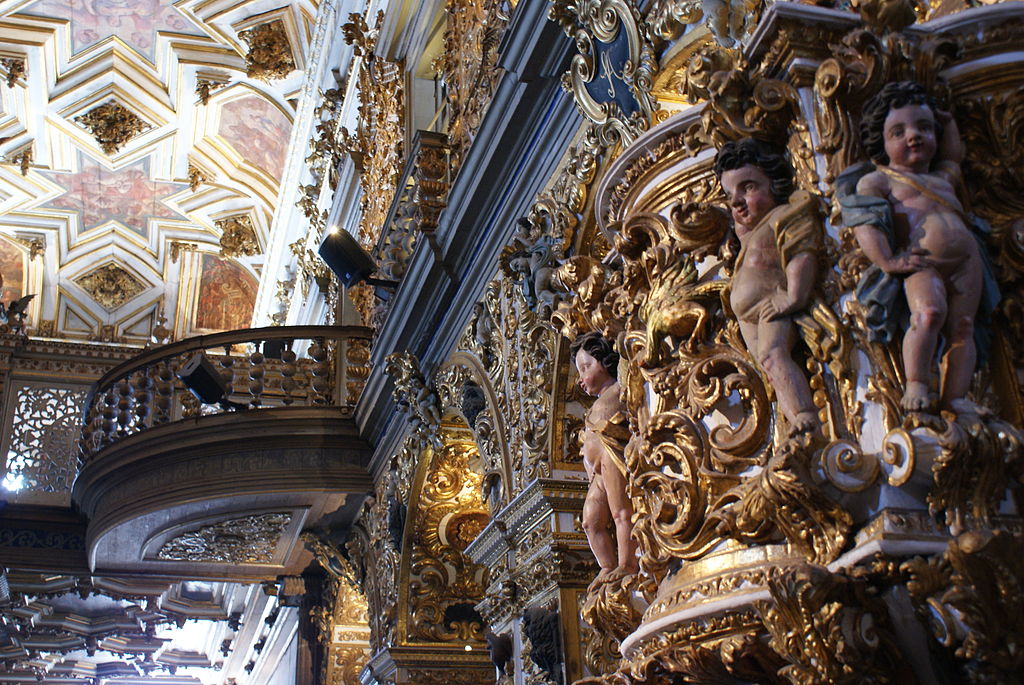In the historical center of Salvador de Bahia, in Brazil, stands the Church and Convent of São Francisco. Completed between the 17th and 18th centuries, this colonial architectural gem is a testament to the confluence of Portuguese Baroque style and Bahian cultural influences – indeed, it is considered one of the Seven Wonders of Portuguese Origin in the world. Recognized as a UNESCO World Heritage Site, the complex offers a glimpse into the history and evolution of Brazilian Catholicism, captivating visitors with both its interior and facade.
Architectural splendor
The façade of the church is decidedly sober. But upon entering, one is immediately struck by the opulence of the church’s interior. Walls decorated with shimmering azulejos (Portuguese tiles) depict scenes from the life of St. Francis, the founder of the Franciscan Order. In fact, the church has the largest number of azulejos of any church in Latin America – around 55,000 in total. The gilded altars and intricately carved wooden sculptures made from native jacarandà wood add a touch of warmth to the European Baroque grandeur.

The design of the church and convent exemplifies a harmonious blend of Portuguese Baroque elements and local Bahian influences. Soaring ceilings reminiscent of European cathedrals are adorned with biblical frescoes, while the use of native woods throughout the interior lends a distinctly Brazilian flavor. This fusion of styles is the byproduct of the cultural and commercial exchange that occurred during the colonial period, when European traditions blended with local expressions.
A testimony to Brazilian Catholicism
Beyond its architectural splendor, the Church and Convent of São Francisco is an important witness to the development of Brazilian Catholicism. Catholicism arrived in Brazil with the Portuguese colonists in the 16th century, taking root in a land already rich in indigenous spiritual beliefs, and African religious practices that arrived in the land with the trans-Atlantic slave trade. Over time, these diverse traditions intertwined to create a uniquely Brazilian form of Catholicism, mostly characterized by a syncretic blend of music and art.

Cultural significance
Recognizing its exceptional cultural and architectural value, UNESCO declared the Church and Convent of São Francisco a World Heritage Site in 1982. This prestigious status underscores the importance of the complex not only in the context of Brazilian history, but also in the broader field of Baroque architecture – and of Catholicism in general. It attracts visitors, devotees, and pilgrims from around the world, drawn by its architectural beauty, and its role as a window into Brazilian Catholicism.



